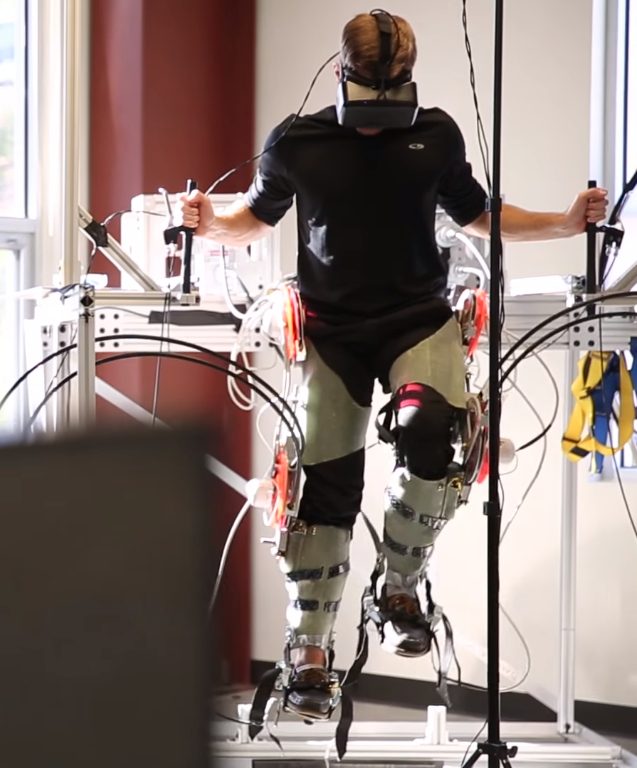AxonVR, the company currently working on a full-body haptic solution for VR, are on their way to bringing their technology to an ever-widening audience. Announced today via an official NVIDIA blogpost, AxonVR says that the company’s fledgling haptic engine is actually built on top of NVIDIA’s PhysX, a middleware SDK that provides GPU acceleration for complex, real-time physics simulations.
AxonVR’s all-in-one haptic solution is aiming to combine an exoskeleton walking platform and haptic suit that provides simulated pressure, hot and cold sensations, so not only can you walk around VR, but you can feel it too.
This is accomplished by the company’s HaptX textile that’s said to deliver the feel of texture, shape, motion, vibration and temperature of virtual objects. As ambitious and captivating the early prototypes may be, a hardware platform can only be as good as its software base though—and that’s where NVIDIA’s PhysX comes in.
“At its heart, haptic simulation comes down to physics. But the precision and level of detail required for haptic simulation go beyond the capabilities of a typical physics engine. Objects don’t just have to look right. They have to feel right,” writes AxonVR CEO Jake Rubin and Zvi Greenstein, General Manager at Nvidia and head of Business Development for VR.


AxonVR says it’s using PhysX to calculate force feedback by figuring out how objects act during a collision, and then extracting more detail about the object’s surface geometry when touching your skin. According to AxonVR, the information gathered from PhysX can allow them to simulate anything from “gentle curves to micro-textures so small you can’t see them with the naked eye.”
“Based on this data,” says AxonVR CEO Jake Rubin “AxonVR’s software models how your skin will deform when touching the surface to produce tactile and vibrotactile feedback. Finally, the software models the transfer of heat between the surface and your skin to produce thermal feedback.”
AxonVR’s HaptX SDK includes a plug-in for leading game engines that lets developers add touch sensations to their projects. AxonVR maintains that content creators can use existing 3D assets and add haptic properties and effects with little or no modification with the PhysX-based HaptX SDK.
PhysX acceleration is supported across many game engines including Unreal Engine and Unity, and works on GeForce 9‑series, and 100‑series to 900‑series GPUs with a minimum of 256MB dedicated graphics memory.
AxonVR has spent the last 4 years in stealth mode, coming into the public eye back in May. Only a few short months later, the company announced the closure of a $5.8 million seed investment which will be used to further develop their HaptX platform. The company is aiming to license their walking platform and haptics suit directly to businesses such as theme parks and VR arcades.
And if you’re still wondering what all the fuss is about, Road to VR’s Michael Glombicki got his hands on a prototype of the HaptX material at Immerse Technology Summit (ex- SEA VR) this fall:
“To try out their technology, I placed my hand, palm upwards, in a slot on the side of large metal box that contained pneumatic drive system needed to make their haptic skin function. Using a Vive controller in my other hand, I was able to place a variety of objects on my virtual hand and feel the corresponding pressure response from the HaptX skin,” said Glombicki.
“The most impressive part of the demo was when I got to place a virtual deer on my hand. I could feel the individual points of contact as the deer moved its legs around my hand.”
Although we haven’t to see the technology worked into a large textile like a full haptic suit just yet, we’ll be following AxonVR’s progress to see just how scalable it turns out to be.


